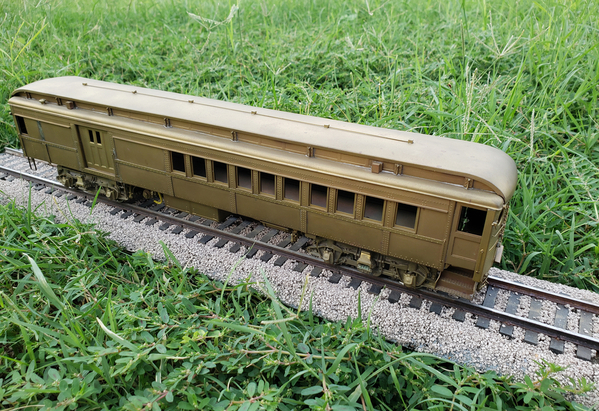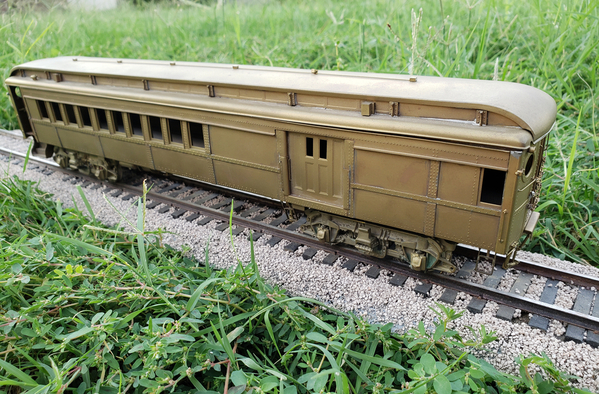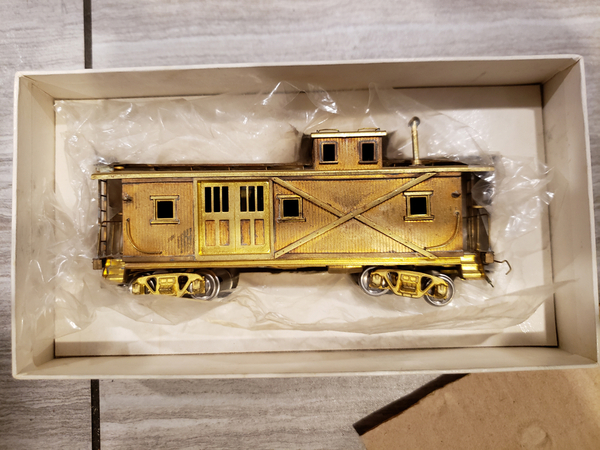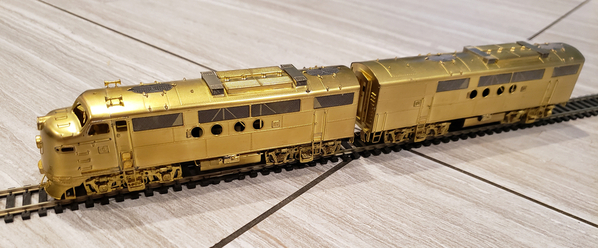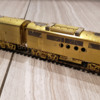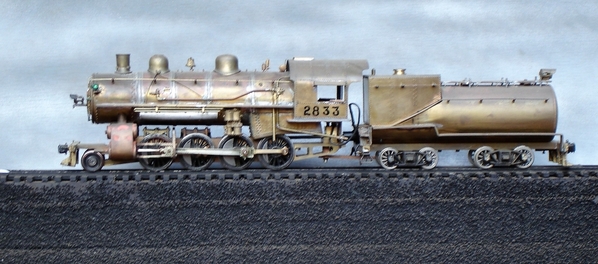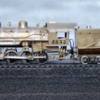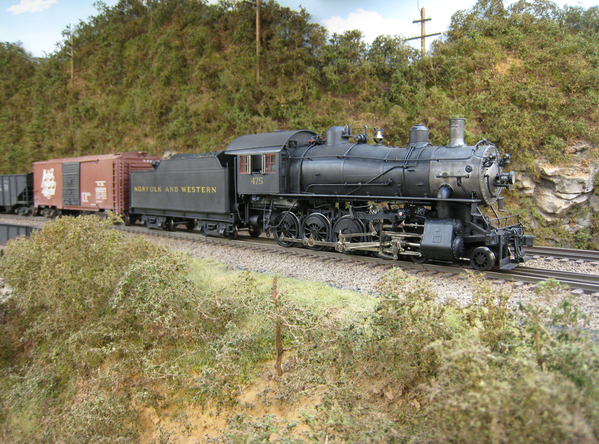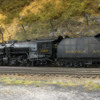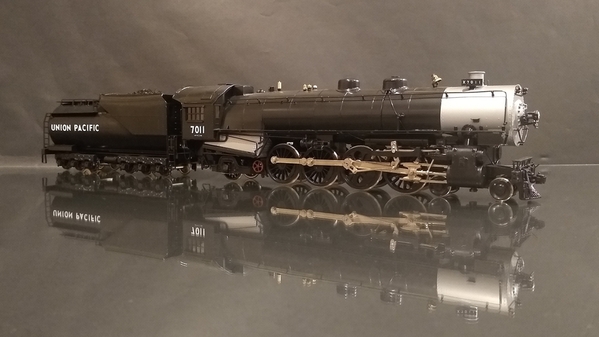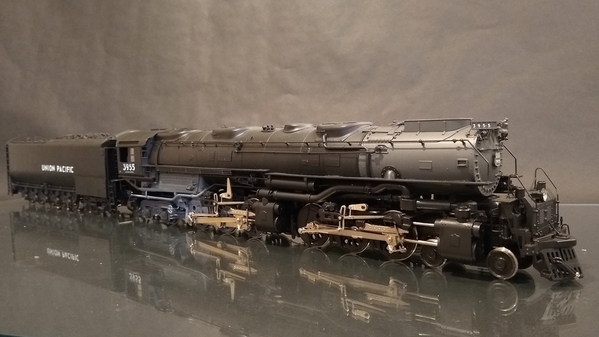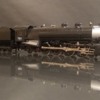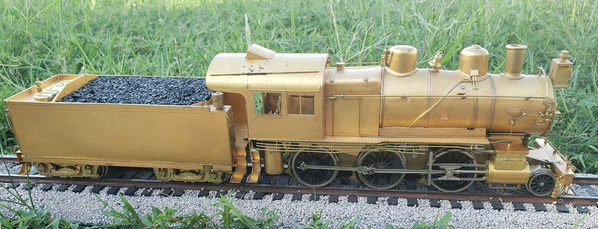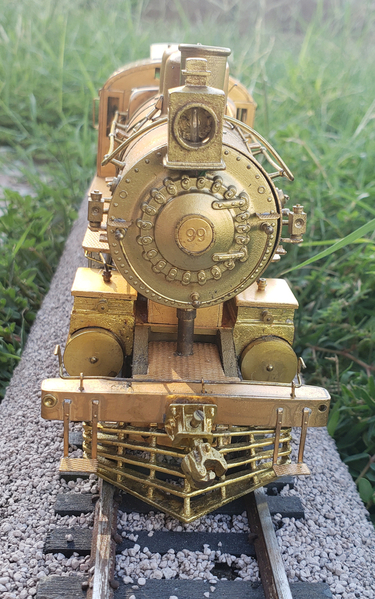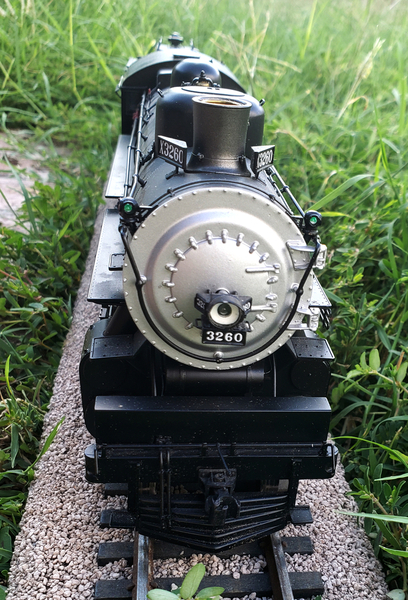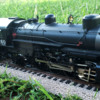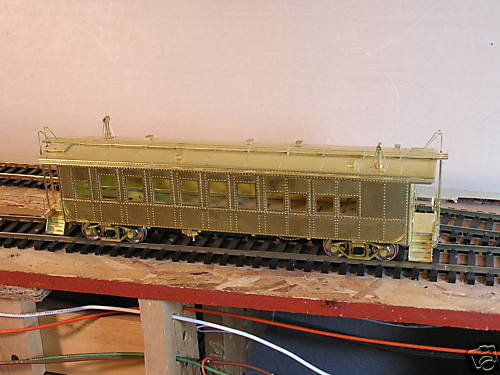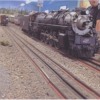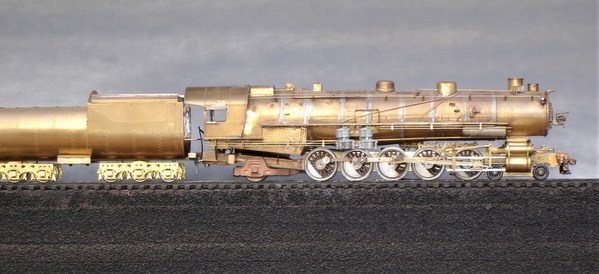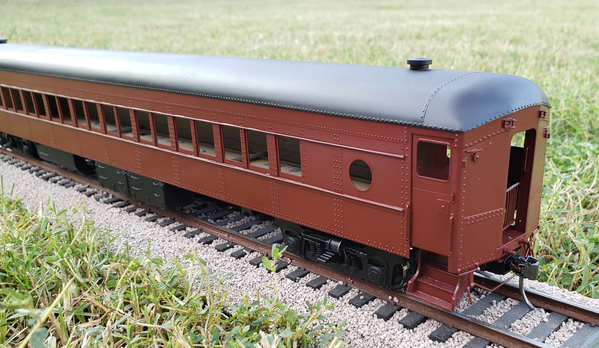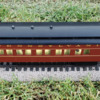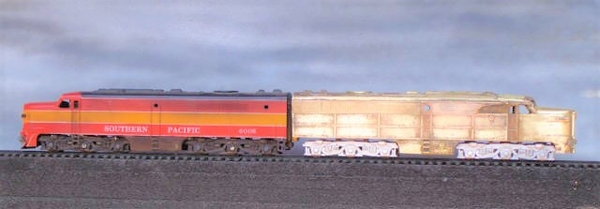Both PSC and Overland made O scale brass models of the Borden's Butter Dish. As far as I know both of them made the car with and without fins. There is a third version of the car with more elaborate fins that extend across the top of the car. Overland made an O scale model of this version as well - I don't know about PSC.
Finally getting my passenger car fleet out to photograph. Here is a Custom Brass PB54.
Also, not O scale, but some of my brass HO:
Attachments
@Trainbros89 posted:I completely agree! That's why I have an Unshrouded J
.
I will have one of those unshrouded J's in my collection! One day...
@bob2 posted:I could get jealous of HO brass.
Some days I do think about "double-dipping" into another scale...
Attachments
My only contribution to brass in the collection ...
A Ken Kidder/Katsumi/KTM from back in the day .....



And his nekkid brethren ( pic from web)


@christopher N&W posted:
That Z1B is gorgeous! Some day, I hope 3rd rail decides to make one in 3 rail
Here's my Sunset CB&Q 2-8-2.
RAY
Attachments
Nice photos.
As a novice, I would ask: What exactly is the attraction of having a brass locomotive? If the beauty of the brass metal, polished, were its exterior, then I could see the beauty.
But, it appears that most of the brass locos are covered with black paint, and have a little less detail than the standard plastic versions, which are also black or painted black.
So, what is the attraction or practical benefit of the brass please?
Thanks,
Mannyrock
Mannyrock,
Brass models are much more accurate and highly detailed compared to a diecast engine. Importers such as Sunset, make these engines more to scale than what a diecast engine will do. Many of the brass engines have unique appliances where as diecast is more generic.
Don't get me wrong, I also have several Legacy engines that are well detailed. It's just that the brass offerings are more prototypically correct in almost every factor.
RAY
With current tooling, plastic does render detail better than brass can. Both brass and plastic render detail better than die casting. Even with plastic models though, the fine detail screens and add-on details are often etched or brass castings as they can render a very high level of detail.
The main benefit these days with brass over plastic or die casting is that brass does not require a tool so the minimum number of units to be ordered can be much lower in brass.
Typically being smaller runs, brass is great for very specific locomotives, especially steam locomotives that tended to be customized by the railroad.
Some of the brass locomotives shown in this thread date back many, many years. When put into perspective, they have a much higher level of detail than a locomotive from the same time period built out of any other material.
Mannyrock
As others have stated plastic can certainly rival older brass for details.
What draws many to brass has more to do with the accuracy compared to a specific prototype of a road name.
Personal example, as you look at my pictures above anyone can get a late model Union Pacific Challenger from many of the manufacturers with good specific accuracy.
A prototype accurate model of a Union Pacific 7000 series mountain on the other hand is impossible because no one made one other than KTM. And so It goes with other prototypes and other road names.
The chief draw of brass models for me is models of prototypes that haven't been done by Lionel, MTH, etc. The K2a and the K3 I have are prime examples.
Another aspect of brass I really like is the fact that each piece is handmade one at a time. The level of craft to do brass is a skillset beyond most modelers and when you purchase a brass locomotive or car you are purchasing not just a model, but the care that went into skillfully crafting it.
Here is a few quick photos of my GEM PRR F3 Mogul. It needs some minor repairs and when I get to painting it, I will be updating for a late appearance with a electric headlight and generator. It is one of the later versions with a can motor so I think it will be a decent runner on my layout even if it is quite a bit out of era for my mid-50's themed NY&LB planning. Still, it will look great pulling a few P70 coaches or a short length of freight cars.
Attachments
One more for this evening. A Sunset / 3rd Rail SP MK-6 Mikado that came to me from the collection of forum member PeterA. I will be running this at my 3 rail club, the Paradise and Pacific.
Attachments
3rd Rail PRR Q1
Attachments
Bob,
You need some Sunset P70's behind that beautiful beast of a locomotive!
I believe brass can be made into a much more realistic model simply because the shell or body has a prototypical thickness. This leads to two advantages when considering fidelity to the prototype:
1) Window frames, box car doors, box car sides, hopper car walls, flat car decks, etc can be made with a prototypical thickness. No need to have 6” thick windshield frames, passenger car sides, caboose windows, caboose platforms, etc.
2) Diesel and carbody sides, boilers, etc are not dead flat, because they are formed, rather than cast from a precision mold. Sometimes they are soldered together from many pieces. This naturally gives a variation in the surface flatness that is just like the real thing. While subtle, to my eye this enhances the overall sense of realism.
Yes, you can add brass details such as grab irons, ladders, etched screens, etc to a plastic or die cast model. And it will look pretty good. But for absolute realism, I can’t get around the fact that the walls are too thick and too perfect.
And yes, I have plenty of plastic diesels and rolling stock:
Attachments
I think there are folks like me who know that plastic makes better, more accurate, and cheaper models, but have an irrational bias against anything plastic.
I will take a crude sand cast brass Diesel any day over a finely crafted plastic version - as you will see in a minute.
Again, admittedly irrational. I hate plastic models.
@bob2 posted:
...Again, admittedly irrational. I hate plastic models.
Now, I vaguely remember an article from O Scale News years ago regarding a certain plastic MTH 2-rail Premier SD9 that a certain someone modified for a more accurate ride height (which is on my list to do as well) and added some specific details. ![]()
By the way, in keeping with the tread topic, here are a couple from my brass collection:
Hallmark by Ajin ATSF Drover car. Now that I have more time, I'm finally going to take it apart and paint it.
The H1 is one of my favorites, but it's delicate so it didn't see much track time at the club. I came very close to buying a 2-rail version when I bought this and almost went for a 2-rail unit that showed up on eBay a few years ago.
I have a few more brass pieces in my collection that I don't have photos for.
Attachments
Good memory, Matt. Next time you come down bring your factory reset stuff and help me reset my MTH Hudson. I will give you a tour, and if you want, a quick airplane ride.
Yes, I have three plastic Train Masters, two Atlas SD35 bodies on strange trucks, and that SD7, which is going to get tiger stripes - and maybe five plastic freight cars and one of those spectacular GGD heavyweight Pullmans. They are exquisite, but not really my thing - I like brass!
Here are a couple of sand cast brass Diesels:
Oh, I have more!
Attachments
Was able to find a great Sunset 3rd Rail Model of the SP 5021 Southern Pacific Class locomotive! A true gem! This is now my 2nd locomotive from Sunset Models and they are truly works of art! I wonder when they are going to re-release the ATSF steam locos!?!?



Attachments
I am a fan of the 4-10-2 type. All of mine are now painted and weathered, but in keeping with the brass theme, let me dig up an "under construction" photo. This particular model won 1st place in a National NMRA judged contest, as well as first place OSW in a popularity contest. The popularity contest is difficult to compete in, since the competition is often factory painted Overland models. I am not as good as those talented Korean craftsmen.
Oh - notice the boiler taper. All of the taper occurs on the sides and bottom, and the ridge line is dead straight. Standard Baldwin stuff, even though Alco made these for SP.
Attachments
There is a lot of nice accessories made in brass, here is a PRR signal bridge for four tracks, made by Precision Scale many years ago.
Daniel
Attachments
A few variations on the P70 Coach
Alco Models P70fbR. The prototype dates to approximately 1960 with the modern trucks and balloon roof. When I saw P70s on their last legs on the NY&LB this as the configuration they were in.
PSC P70R Coach Broiler. These had a small kitchen and cafe seating at one end.
PSC P70R. Basic classic P70 coach.
Attachments
Back to the 17/64 brass - did I show you this?
Mostly brass, but the boiler is a steel hunk of exhaust pipe. This one was my first attempt at scratchbuilding, in 1985. I had been thinking of doing it since 1957, when I first attempted an elevation drawing. Unlike some, this one ran smoothly the first time I applied power - Pittman/NWSL.
Sorry - no digital photos of this one prior to paint.
Attachments
I will take a better picture when time allows, but here is my Division Point brass N&W Steel Caboose.

Speaking of sand-cast diesels, I believe that this H10-44 is one:@bob2 posted: ...snip... Here are a couple of sand cast brass Diesels ...snip...It weighs in at a little over thirteen pounds and with that eight-wheel drive should do a right fine job of pulling. Unfortunately, the wheels are not insulated for two-rail so it sits in its box for the time being.
Attachments
Wow...this is turning into an all-time great thread; only wish I had something to contribute...
Mark in Oregon
@Strummer posted:Wow...this is turning into an all-time great thread; only wish I had something to contribute...
Mark in Oregon
There is never any time like the present to start collecting brass locomotives, cars, and accessories.![]()
@GG1 4877 posted:There is never any time like the present to start collecting brass locomotives, cars, and accessories.
I second that!!
I recently got a 3rd Rail PRR PB54 commuter car. Not sure how old it is, the the plastic window inserts are falling off. Looks like I have most of them, but not sure where to get replacements if needed. It also has a short in it that needs to be fixed; disconnected the light circuit for now to run it. Looks great.
Attachments
@GG1 4877 posted:There is never any time like the present to start collecting brass locomotives, cars, and accessories.
Ha!
I've got some HO brass, a couple of the Williams early Pacifics and the (2) All Nation Ten Wheelers...but nothing like what's being shown here...this is awesome. ![]()
Mark in Oregon




